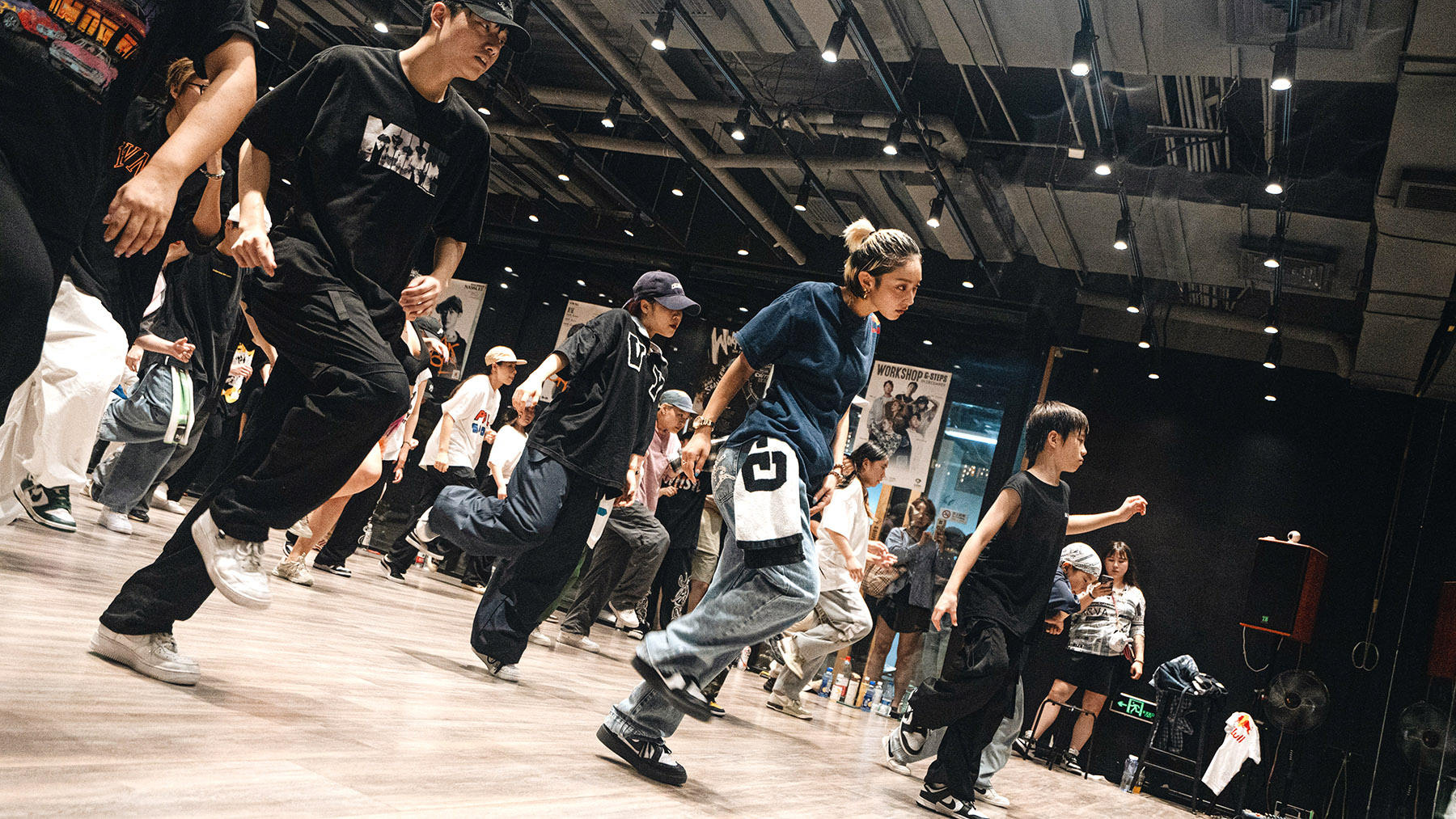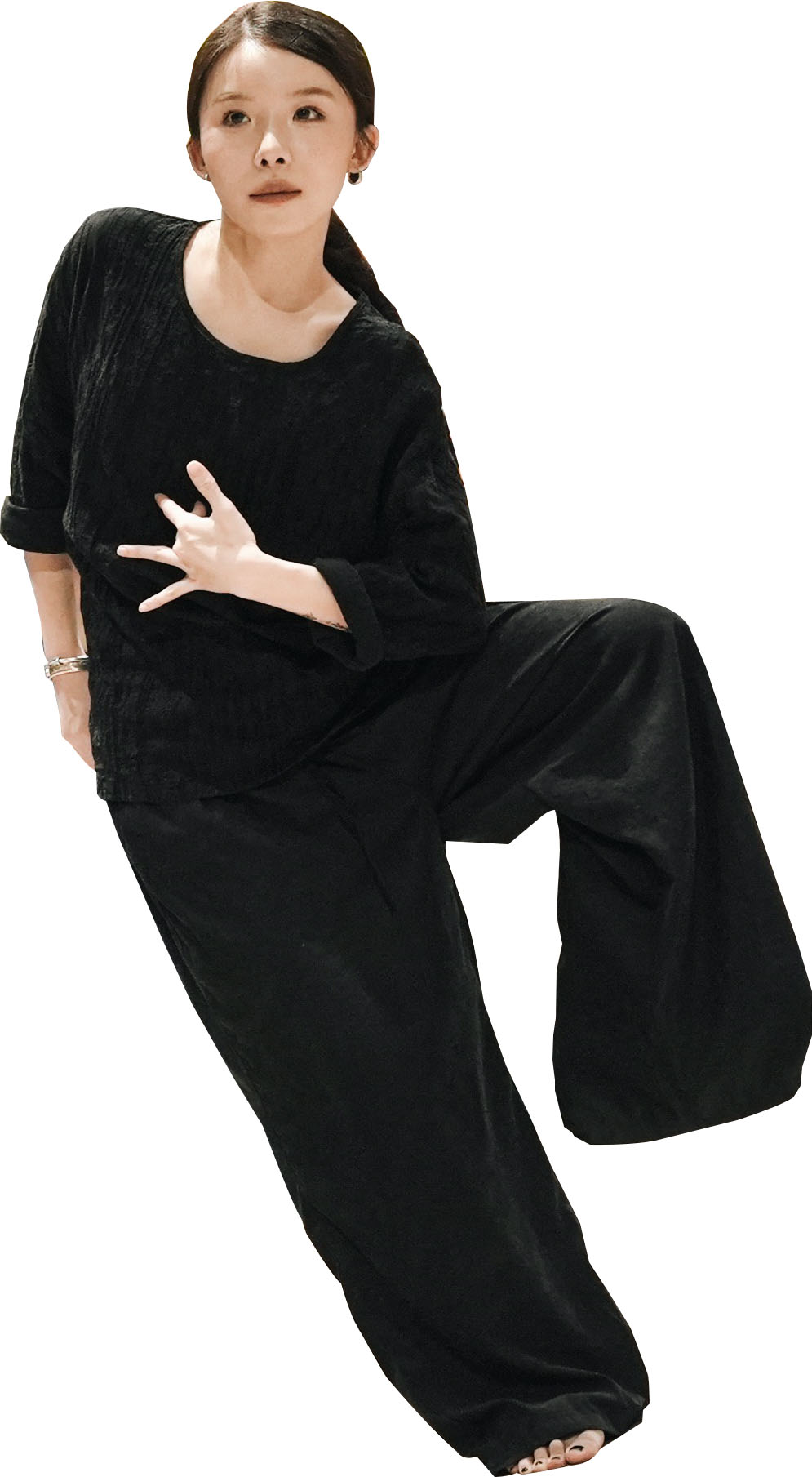Urban art form brings joy, resilience, self-expression to young professionals

Fan Xiaoyu's parents used to worry that their son was turning into a "bad boy". As a teenager obsessed with street dance, Fan spent a lot of time dancing in baggy, flashy outfits instead of studying hard at school as his parents expected.
Now, the 34-year-old runs G-Steps Dance Studio, one of the largest dance instruction companies in the country, which has more than 30 branches in Beijing and has trained over 150,000 people.
"I never imagined my passion for dance would be shared by so many people," Fan said. "Nowadays, not only is it accepted in the mainstream, but it is becoming truly recognized and popular among the general public."
READ MORE: Popping the Electric Boogaloos
In China's bustling urban landscapes, a vibrant street dance culture is emerging, particularly among young professionals seeking an escape from their demanding work lives.
For many young workers, the day begins with the grind of a typical office environment — emails to answer, reports to generate, and endless meetings to attend. These professionals often spend long hours in front of screens.

Don't stop believing
Fan was no exception. In 2013, he started working at an internet company in Beijing. He had earlier moved from Baoshan, Yunnan province, to the capital city to study business administration at college.
After the company shifted to a new building, Fan discovered a spacious yoga room with mirrors lining the walls that the company had prepared for its employees.
"When I saw the room, I instantly associated it with a space for dancing. Then I started dancing in front of the mirrors, and soon people who shared the same interests came and we danced together," recalled Fan.
"Since most of them had never danced before, I started to teach them, and I was surprised to find that those without a dancing background learned very fast. What impressed me most was their passion for dancing," Fan said.
In four years, Fan gathered together about 500 of the internet company employees to participate in the informal dance groups. The company, which has about 10,000 employees, supported Fan's idea and hired more dance teachers to give classes every day after work.
One of the teachers was Wang Xiao, who was also from Yunnan and who had learned to dance as a child.
"I can still recall the first class. I taught those who had never received dance training before. They found it hard and followed my moves reluctantly," recalled Wang, now an experienced G-Steps instructor.
"I thought that they may not return to my class, but to my surprise more people came."
In 2017, Fan launched his first dance studio near Beijing's 798 Art Zone. His colleagues and bosses questioned his decision to become an entrepreneur, but Fan was determined.
"I wanted to open the dance studio because I never stopped loving dance. It's my greatest passion," he said. "With the experience of teaching my former colleagues to dance, I wanted to bring the joy of dancing to more people."
Fan named his dance studio "G-Steps", after a dance club he started when he was a high school student. He described the venture as "rediscovering and returning to what I love".
Drawing inspiration from stars like Michael Jackson, whose unique dance style fused pop, funk, soul and hip-hop, as well as from K-pop groups, Fan started dancing as a teenager because it "made me feel cool".

Urban roots
With diverse movements and rhythmic music, dance intrigues most people.
Young Chinese professionals have embraced a number of dance styles such as contemporary, Chinese folk, and classic Chinese dance, but street dance is the most enjoyable one for amateurs and beginners, Fan believes.
"Compared with other dance forms, like ballet and classic Chinese dance, street dance is easy to learn, makes individuals overcome their fears and builds confidence," he said. "It also promotes mindfulness and helps individuals to stay mentally focused."
Fan said the development of dance culture is closely linked to urbanization.
"Regardless of background — whether an office worker who is a beginner or a seasoned dancer with years of experience — everyone possesses the same potential to dance. Young people are willing to invest in dance, marking a positive shift," he said. "The youngest student we have is about 4 years old and the eldest one is more than 60 years old. Dancing is a universal pleasure for people of all ages and occupations."
Fan said when language fails to convey meaning, we can communicate through our bodies.
"Dance transcends words, allowing us to express emotions and connect on a deeper level, showcasing the powerful resilience of the human spirit," he said.
G-Steps instructor Yu Zhongyuan joined the company in 2017 after he finished second in the popping category at Juste Debout, in Paris, one of the biggest street dance competitions in the world.
Yu has been dedicated to street dance since he was a teenager. After he moved to Beijing from Qingdao in Shandong province to study law, he won a number of street dance competitions and gave street dance classes at universities in the capital.
"Unlike dance professionals, this love for dance among amateurs is not just a trend; it represents a shift in lifestyle and a means of self-expression for a generation striving to balance work and personal fulfillment," Yu said.

What a feeling
Street dance originated in the United States in the late 1970s and includes a variety of styles, such as breaking, or hip-hop, locking and popping.
In China, street dance has taken root for various reasons, including internet exposure, high-profile celebrity collaborations, and televised competitions, leading to it finding plenty of enthusiasts.
The appeal of street dance has also been boosted by popular shows, such as Street Dance of China, streamed on the video site Youku.
Wu Qiping, 29, is a dance enthusiast who works and lives in Chengdu, Sichuan province. Almost every day, when the clock strikes five, a transformation occurs in the young woman.
The busy office atmosphere gives way to the pulsating beat of music filling a local dance studio where Wu takes dancing classes almost every day after work and also at weekends.
Her introduction to dance was serendipitous. In 2022, Wu and two of her friends from college each paid 20 yuan ($2.80) for a dance class.
"After experiencing significant burnout from work, we were looking for a way to recharge. Though none of us had danced before, we decided to give it a try," said Wu.
The moment she stepped into the studio, the vibrant energy and infectious hip-hop beats enveloped her.
"The first class was very awkward. I was very uncoordinated. We stood at the back of the classroom and found it very challenging to follow the lead of the teacher," recalled Wu, adding that she wore her office outfit to the dance studio, which made her stand out from the other students.
Though her two other friends dropped out of the class, Wu found the experience unlike anything she had encountered before.
At first, she struggled with the choreography; her movements were — stiff and unsure. However, the supportive atmosphere and encouragement from her instructor and peers motivated her to push through her initial discomfort. The dance studio became a place of liberation, allowing her to express herself outside the constraints of work.
As the weeks turned into months, Wu's commitment to dance deepened. With each session, she gained confidence not only in her dancing but also in her overall demeanor. The emotional release she experienced through dance was profound, and it became a form of therapy, allowing her to process the stress and anxiety accumulated from her day job.
As she reflected on her experiences, she recognized that dance had transformed not just her approach to life, but her overall well-being: from her fashion sense to her self-confidence. It became a vital part of her identity — a source of joy, connection, and resilience in an ever-demanding world.

Dance me to the end
Hao Xin, 25, also finds joy in dancing, a hobby she started in college.
"After a long day of work, the freedom of dance provides me with a necessary outlet for stress relief. I enjoy the dance studio which is filled with the sounds of laughter and music. It fosters a sense of community as these dancers bond over shared experiences, supporting each other's growth and celebrating personal milestones," said Hao, who works for an advertising company in Beijing.
Wang Jiatong fell in love with street dance when he was 13 while passing by a street dance studio in Hanzhong, Shaanxi province. He believes it was one of the first dance studios of its kind in the small city, and he was deeply intrigued by the energetic music and an environment where he could express himself in a creative and unique way.
Wang came to Beijing to attend university, secured the advertising company job, worked hard, and tried to live the life he had dreamed of, but reality intervened.
"The office was dull and only the dancing made me feel alive," said Wang, 34.
ALSO READ: Dance classes catch on as fitness craze
Last year, he returned to Xi'an, capital of Shaanxi province. Four months ago, he launched J-Dance studio, which offers street dance courses for enthusiasts.
"So far, we have more than 300 registered users, which is beyond my expectation," Wang said.
"Unlike first-tier cities, such as Beijing and Shanghai, street dance studios like ours are still a growing trend in Xi'an. But the first month after the studio opened we received warm feedback from the users," he said.
Compared with dance studios from about 10 years ago, which attracted professional and aspiring professional dancers, dance studios are nowadays popular with amateurs, he said.
The dance studio has become a sanctuary where young people can reclaim their identities beyond their job titles, he said.
"Ninety percent of our clients are young women who are white-collar workers, full-time mothers, and young students," said Wang. "They enjoy the atmosphere in the dance studio. From the outfits to the makeup, they show great interest and passion when they appear in the dance studio, showcasing themselves in front of the mirrors."


